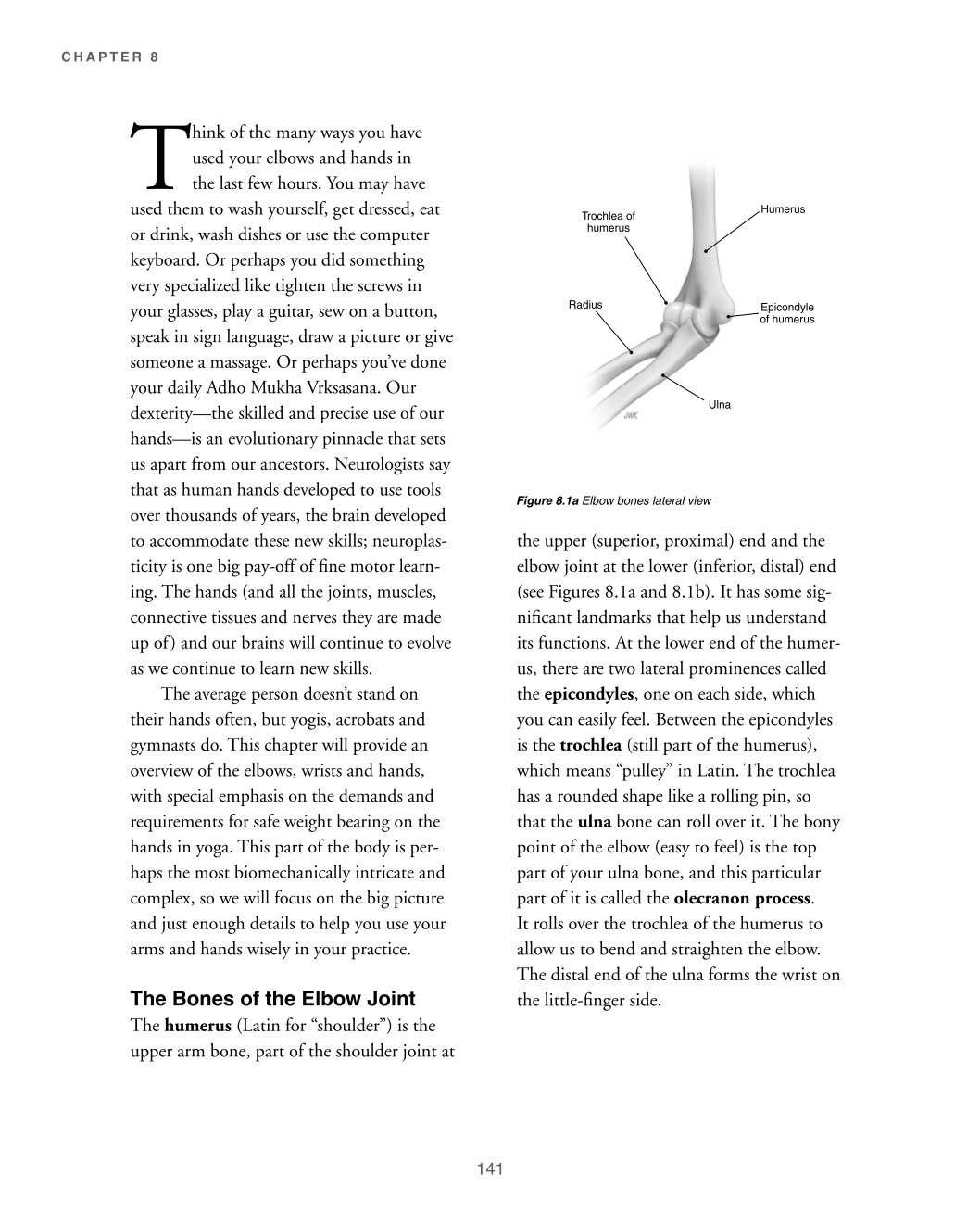

CHAPTER 8
T
hink of the many ways you have used your elbows and hands in the last few hours. You may have used them to wash yourself, get dressed, eat or drink, wash dishes or use the computer keyboard. Or perhaps you did something very specialized like tighten the screws in your glasses, play a guitar, sew on a button, speak in sign language, draw a picture or give someone a massage. Or perhaps you’ve done your daily Adho Mukha Vrksasana. Our dexterity—the skilled and precise use of our hands—is an evolutionary pinnacle that sets us apart from our ancestors. Neurologists say that as human hands developed to use tools over thousands of years, the brain developed to accommodate these new skills; neuroplas- ticity is one big pay-off of fine motor learn- ing. The hands (and all the joints, muscles, connective tissues and nerves they are made up of) and our brains will continue to evolve as we continue to learn new skills. The average person doesn’t stand on their hands often, but yogis, acrobats and gymnasts do. This chapter will provide an overview of the elbows, wrists and hands, with special emphasis on the demands and requirements for safe weight bearing on the hands in yoga. This part of the body is per- haps the most biomechanically intricate and complex, so we will focus on the big picture and just enough details to help you use your arms and hands wisely in your practice. The Bones of the Elbow Joint The humerus (Latin for “shoulder”) is the upper arm bone, part of the shoulder joint at Trochlea of humerus Humerus
Radius Epicondyle of humerus
Ulna
Figure 8.1a Elbow bones lateral view the upper (superior, proximal) end and the elbow joint at the lower (inferior, distal) end (see Figures 8.1a and 8.1b). It has some sig- nificant landmarks that help us understand its functions. At the lower end of the humer- us, there are two lateral prominences called the epicondyles, one on each side, which you can easily feel. Between the epicondyles is the trochlea (still part of the humerus), which means “pulley” in Latin. The trochlea has a rounded shape like a rolling pin, so that the ulna bone can roll over it. The bony point of the elbow (easy to feel) is the top part of your ulna bone, and this particular part of it is called the olecranon process. It rolls over the trochlea of the humerus to allow us to bend and straighten the elbow. The distal end of the ulna forms the wrist on the little-finger side.
141